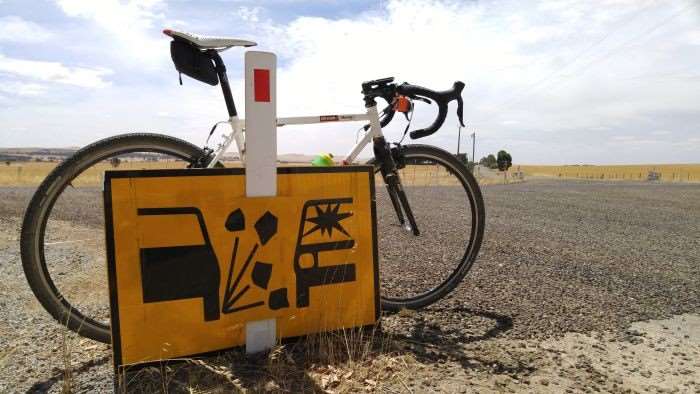
As the allure of gravel cycling continues to grow, so does the availability of new products relevant to the genre. Maxxis have been in the tire (tyre) business for many years, and are well known for tyre products ranging from bicycles to automobiles. One of their entries into the bicycle tyre market is the 40mm wide Maxxis Rambler, a tyre we first took receipt of during late November of 2015.
The Rambler falls under the Maxxis Gravel / Adventure range, and is marketed as a gravel and dirt road racing tyre. Featuring a gravel-specific tread pattern, long-life dual tread compound, tubeless ready construction and EXO sidewall protection on the high end 120TPI (threads per inch) model, the Rambler is a tyre that sounds perfect for just about any gravel road one may encounter.
Available in two models:
- 60TPI version with Maxxis Silkshield puncture protection technology, and a manufacturer’s claimed weight of 435 grams. Per Maxxis, “SilkShield offers protection from bead to bead and provides an additional level of protection for sidewalls in addition to under the tread.”
- 120TPI version with Maxxis EXO sidewall protection technology, and a manufacturer’s claimed weight of 390 grams.
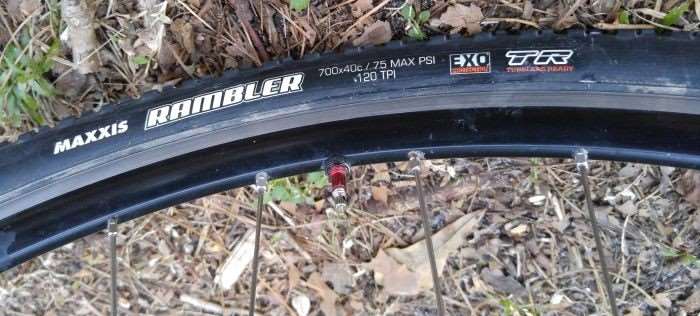 Do the marketing claims of Maxxis hold water? To answer this question and others, read on…
Do the marketing claims of Maxxis hold water? To answer this question and others, read on…
Weight
The 120TPI sample tyres sent by Maxxis weigh 380 and 381 grams respectively, a saving of nine and ten grams over the manufacturer’s claimed weight. Rotating weight savings are among the best you can make.
I’ve read of other reviewers having difficulties mounting this tyre, and getting it to seat and hold air. I cannot comment about their tyre mounting method, but my experience with the Maxxis Rambler has been quite the opposite. A compressor is required, but by following the steps my good friend Dr. Pain and I recommend, we had success every single time.
- We recommend installing two layers of tubeless tape on the rim of your choice. Some wheelsets, such as those made by American Classic, come with base tape installed. We have found their base tape to be more than adequate out of the box, not requiring additional layers of tape.
- Be sure the tyre is properly seated around the valve area. If the tyre is a little stubbon to situate itself properly, remove the valve core nut, push the valve core up towards the top of the tyre and pull back down again. This should seat the core within the confines of the tyre casing. Don’t forget to re-install the valve core nut and tighten appropriately.
- Always dry mount the tyre first sans sealant, to ensure it will seat and hold air. If a tyre proves tricky to inflate, remove the valve core and try again. If this doesn’t work, apply something like Sleek Beeswax & Mink Oil Furniture Polish to the sidewall. This product is far better than soap and water, and will help seat even the most stubborn of tyres. This product can be purchased from your local furniture store or online.
- Once the dry mount test has been passed, install your favourite sealant and inflate.
We mounted and rode the Ramblers on three different wheelsets – American Classic Hurricane tubeless, Stans Alpha 340 rims laced to Shimano Dura-Ace 7700 series hubs and the American Classic Race 29’er wheeset (ridden in this configuration last weekend by Gravel Cyclist’s own, Pfaff Daddy).
Regardless of wheelset choice, the Ramblers held air nicely with no signs of sidewall leaks.
Is the Maxxis Rambler really 40mm Wide?
Mounted on the following wheels and rims, at 40psi they measure:
- Stans Alpha 340 rim, 39.3mm – 39.5mm (see photo below).
- American Classic Hurricane wheelset, 40.1mm.
- American Classic Race 29’er MTB wheelset, 41mm.
Important note: American Classic does not recommend mounting tyres with carbon beads onto their rims.
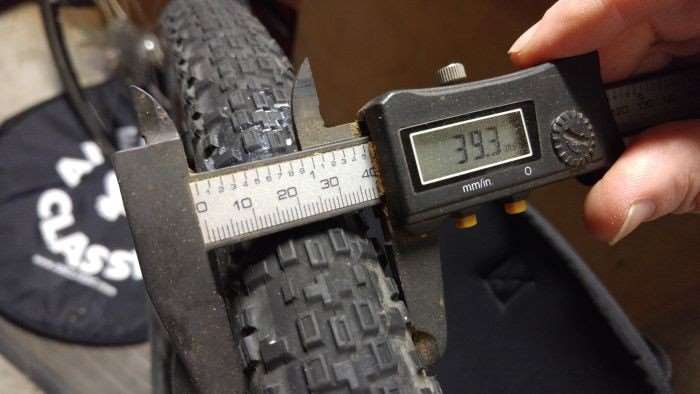
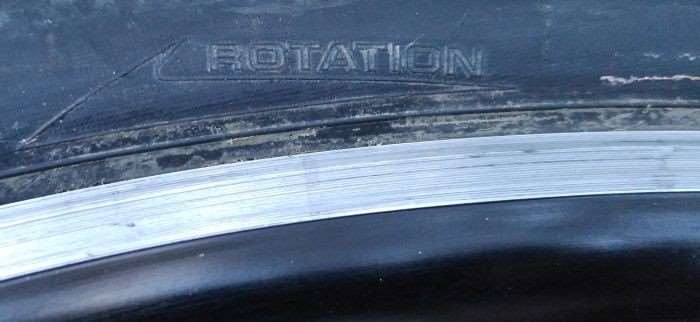 Important to Note – The Ramblers are directionally mounted, so take note of the sidewall marker. With that said, I purposely ran the rear Rambler backwards for a short period and didn’t notice much of a difference. However, Maxxis may not recommend this, so pay attention!
Important to Note – The Ramblers are directionally mounted, so take note of the sidewall marker. With that said, I purposely ran the rear Rambler backwards for a short period and didn’t notice much of a difference. However, Maxxis may not recommend this, so pay attention!
Sealant used with the Maxxis Rambler sample tyres has been Orange Seal’s Endurance Formula (link to Gravel Cyclist review).
Riding the Ramblers
This pair of sample Ramblers has led an interesting life. My testing has gone far beyond the regular norms associated with rolling around roads in the Midwest of the United States. For the month of December 2015, they spent their lives crushing dirt and gravel roads in North Central Florida. For January of 2016, they accompanied me to Australia, and traversed the varied surfaces of the gravel roads in South Australia.
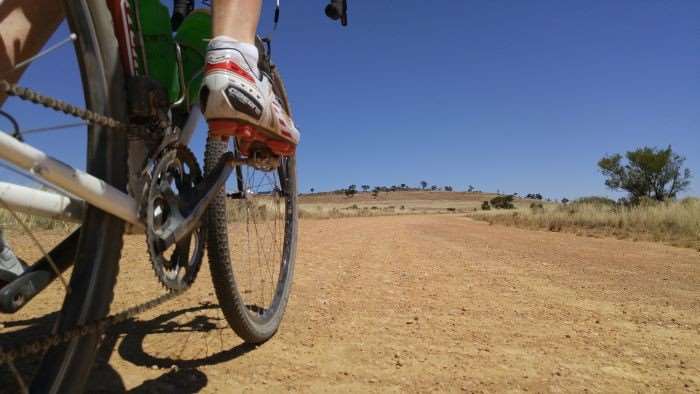
In both hemispheres, my Ramblers were inflated to 38psi front, and 40psi rear. My Gravel Cyclist teammate Pfaff Daddy, inflated his Ramblers to 30psi at last weekend’s Honey Bee Stinger 100K event in Georgia and loved how they rode. He informs me he’ll be testing them soon at 28psi.
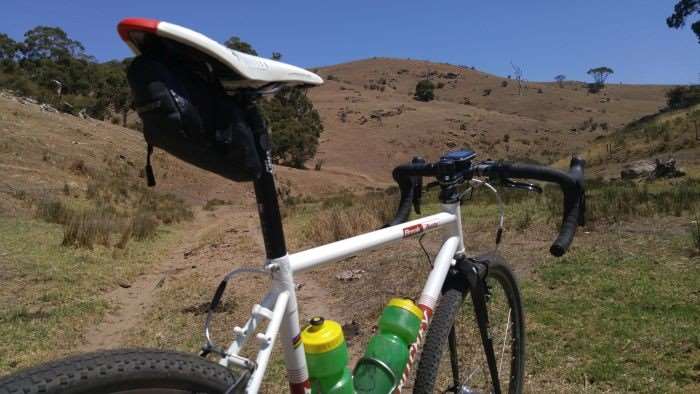
While I prefer a firmer ride on my Ramblers versus that of my esteemed teammate Pfaff Daddy, the Maxxis Ramblers have proven to be a fast and lightweight tyre, with plenty of grip in all situations and surfaces, barring only the loosest of gravel while cornering. Like any tyre while cornering on the loose stuff, one needs to exercise caution to not lose traction from either wheel.
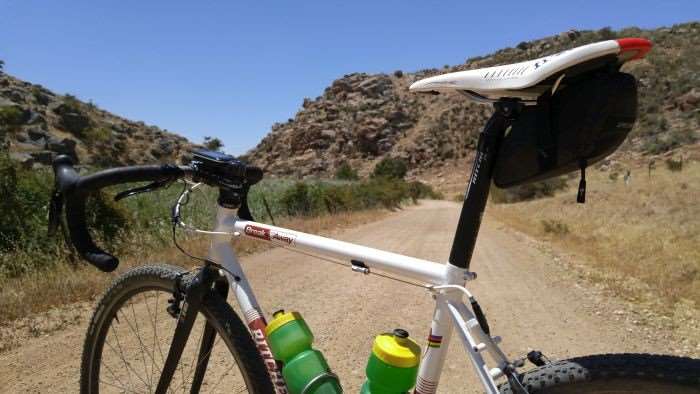
I rode the Ramblers up long steep grades, down gnarly roads littered with rocks and smaller pea sized gravel, and everything in-between. While the Ramblers appear fragile, their supple casing has proven rock solid with nary a cut or slice anywhere in either tyre casing. They are also long wearing. As seen below, the rear tyre is barely showing any wear after many miles and kilometres of solid use – I have not rotated them.
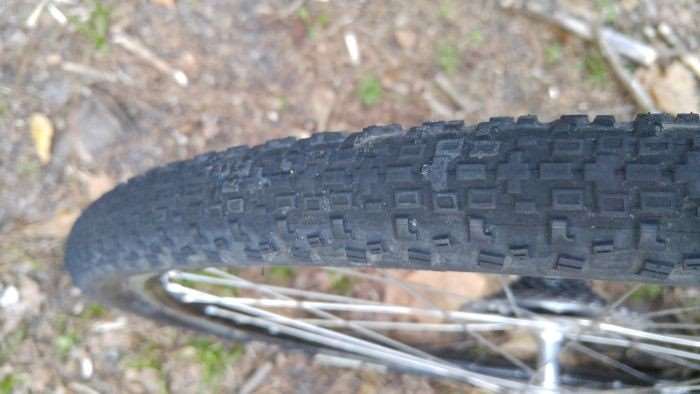 Additionally, they roll nicely on paved / bitumen roads. I’ve clocked myself at 78 km/hr / 49 m/hr descending some paved roads on the Ramblers, so the shallow knobs are not a handicap. More importantly, there is barely a noise to be heard from them, except on the smoothest /newest of pavement. Howling on pavement means resistance, and that is never good for anyone.
Additionally, they roll nicely on paved / bitumen roads. I’ve clocked myself at 78 km/hr / 49 m/hr descending some paved roads on the Ramblers, so the shallow knobs are not a handicap. More importantly, there is barely a noise to be heard from them, except on the smoothest /newest of pavement. Howling on pavement means resistance, and that is never good for anyone.
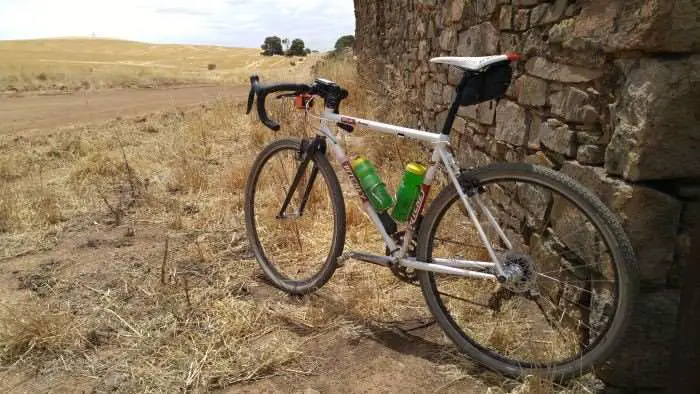
Summary
The Maxxis Rambler is my 40mm gravel tire (tyre) of choice. They are tubeless ready – yes, real tubeless! – no messing around, easy to mount, fast rolling and confidence inspiring on corners.
Priced at an MSRP of $US 64.00 each for the 120TPI version, they can be had cheaper if you look around.
| 120 TPI Rambler Tyre | 60 TPI Rambler Tyre |
| Click to Buy |
Highly recommended by the Gravel Cyclist crew!
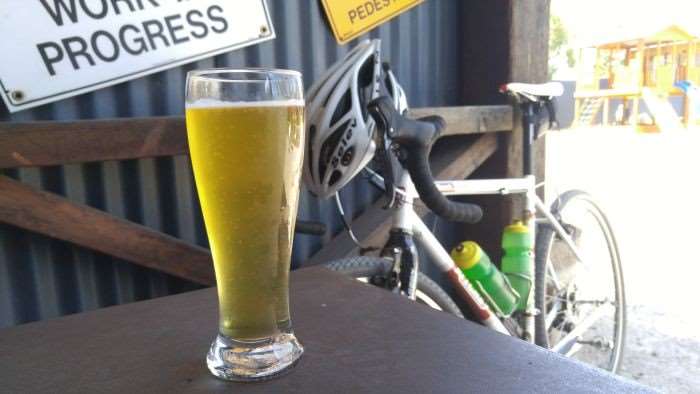


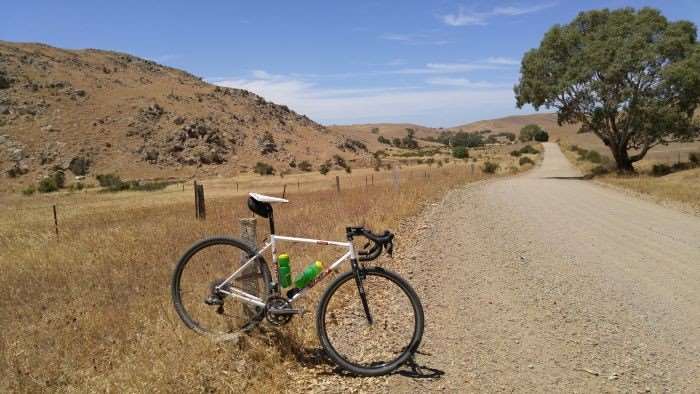
Jason, thanks for timely review. I just recieved my Boyd Cycling Altamont wheels (sorry American Classic) to go on my Ritchey BA XC and this will be my first attempt at going tubeless and these look like a good place to start.
Jim, you’re welcome. Once you’ve mounted your Ramblers, I believe you’ll be more than happy with their performance.
I also have one of American Classic’s road tubeless wheelsets, and I love me some Maxxis tires. But I’ve been disheartened by the fact that the Maxxis Rambler and Re-Fuse both have carbon fiber beads, about which American Classic sez: “Do not use tubeless tires with carbon fiber beads.” What gives? They obviously worked just fine for you. Is AC worried that someone will install a tubeless tire with a stronger-than-kevlar CF bead and inflate it beyond the pressure rating of the rim?
Cheers!
I meant to say in the review American Classic does not recommend mounting carbon bead tyres with their rims. However, your question is best answered by posting it to American Classic directly – sorry. With that said, the Ramblers took a little bit of effort to remove and pop free from the bead of the Hurricane wheelset, which in my mind is a good thing!
Do you have any insight as to which Rambler (60 or 120 tpi) will be more puncture resistant? Weight is a nonissue for me.
Hi Daniel,
According to specifications, the 60 Tpi version should be more puncture resistant with its SilkShield puncture protection belt. From Maxxis – “SilkShield offers protection from bead to bead and provides an additional level of protection for sidewalls in addition to under the tread.”
Unfortunately, we don’t have any experience with the 60Tpi version of the Maxxis Rambler.
Thanks for your question!
i and 3 bike shop mechanics found they would not seat on my WTB i23 KOM rims. A Semi-pro team mechanic could also not seat them. buyer beware
Hi Mike, sorry you had a negative experience. We haven’t tried that combination of rims with the Rambler. Perhaps you should relay your feedback to Maxxis themselves?
I was able to mount the Rambler 40’s, on WTB i23 KOM, with little fuss. One went up with floor pump, other required a shot of CO2. But, after putting a hundred miles on or so, I flatted the front from a large thorn. Orange crap sucks, will never buy it again (sidenote), back to Stan’s for me. But, the issue came when after I patched the tire, and went to mount when it exploded off the rim. Clearly the bead failed, so I put a tube in it hoping to still use it, but same thing, bead is blown. Now tire is worthless. But as far as ride, these tires are nothing short of magical.
Justin, you may want to relay your experience to Maxxis. I’m sure they’d like to hear your feedback.
Nice review JOM! Do you see a difference in the quality of ride if you mount them with a tube? My wheel set is Enve 3.4 disc (NOT tubeless compatible) and interested to learn if avid gravel cyclists still consider mounting tires with tubes.
What about running them with a tube? I’m thinking of being able to swap between a more paved road tire and a tire like this.
Hey Josh, that will work.
The Maxxis Rambler mounted easily on my NOX Composite carbon wheelset. The Rambler bead seemed to have a slippery silicon like substance on them out of the box and I dry mounted them using a 16 gm CO2 without removing the valve core or applying any additional lubricant to the bead. After putting in 2 oz. of Stans, I reinflated the tires with a floor pump. They did not loose any air overnight.
Hi Jack,
Glad to hear you had no problems either. I’ve read one review that claimed they had great difficulties mounting these tyres? I’ve swapped the same set I acquired for review in December between three different wheelsets, absolutely no problems! They are my favourite 40mm tyre at the moment.
I read this review before purchasing the ramblers and I had to come back and say that I had zero issues whatsoever mounting these on my Stans Grail rims. They were fairly easy to get onto the rim (I’m female and often struggle with getting tires on rims) and after putting a scoop of Stans in, they inflated easily with a compressor and the bead popped in right away. I’ve never mounted a tubeless tire by myself before and I’m not very mechanically inclined.
I haven’t used them yet but I run maxxis tires on all my bikes and I know these will not disappoint.
Great to hear Amanda! Reviewers on other sites complained of difficulty mounting these tyres – they should take a class from you! 🙂
I love the Ramblers.
Can we get an idea of what “many miles and kilometres of solid use” is? I’m in the market to replace a fast wearing OEM tire (bald after ~800 miles). Thanks!
Ken, I’ve got at least 1,200 miles on those tires. Currently they are not being used, but there is still plenty of life left in them.
How would you compare the ramblers to the panaracer tires you’ve been riding lately?
I prefer the Panaracer’s for gnarlier conditions. I haven’t punctured the Ramblers, but they do appear fragile; with that said, I haven’t been gentle and there are no signs of damage. The 40mm Panaracer GK is overkill for much of the riding I have done and there is a weight penalty – but they were perfect for Dirty Kanza 200. The 35mm version which measures about 38mm mounted isn’t porky, is a nice size and rolls fast. I am pretty torn between this tyre and the Rambler. I like both equally – but both are suited to different gravel conditions.
Hope to have the Panaracer GK review up soon…
You noted that “the Ramblers took a little bit of effort to remove and pop free from the bead of the Hurricane wheelset”. I’d think it would be similar for the 101 rim. How hard was it to break them free? Schwalbe g-one are nearly impossible to get pushed off the inner shoulder of the rim.
I had to use a good amount of pressure with both thumbs and the bead popped away nicely. American Classic wheels don’t recommend using tyres with carbon beads on their wheels… I take heed of that warning, but have found the bead lock to be extremely secure. Never had any burping issues, etc… generally I run my wheels at around 35 – 40psi if using the Rambler tyre.
CXNut, did you ever get these on the AC101 rim? I am looking to buy these for my 101 rims and I had big trouble with Schwalbe tires.
I ran these tires in Landrun, Dirty Kanza and Race Across Texas. While I like the ride quality and traction I had tread separation twice. Once running Stans and once running Orange Seal. I tried to contact Maxxis about the tires and they haven’t responded to my request. I understand that all products can fail but I expect a company to stand behind their product. Maxxis didn’t.
Rick, that is disappointing to hear. Message me privately at [email protected] – I may be able to put you in touch with a real person at Maxxis.
I have been impressed with the weight and ride but mine haven’t held up nearly as well. They show very noticeable wear after about 500 miles. I suffered a massive blowout in the center of the tread yesterday. I had planned to use these tires for CFITT next month but I’m searching for new tires now. The WTB Nanos are looking good.
I struggled installing these on my i9 Trail CX disc wheels but after using a tube to seat them initially, I was able to get them to seat up the second time around if I only slipped the bead off of one side. They seem to be holding air pretty well.
Sometimes you have to get creative with tyre mounting… glad it worked out in the end John.
JOM,
I’d be interested to hear your thoughts on the Ramblers after the market has been “flooded” with a host of gravel-specific tires. They’re still some of the lightest offerings and great all around tire in my opinion, but don’t get a lot of love at races like DK200. Thanks, keep up the great work, I really enjoy your thoughts and insight.
Still love the Rambler, and I know riders who swear by them at DK 200. I feel they are a little too lightweight for that race, so I rely on the beefed up Gravelking SK in 38mm. I will be running that tyre again this year unless it rains… in which case I’ll switch to the Gravelking Mud tyre.
Thanks for the review, i know what to buy now and always had good experiences with maxxis tyres. Cheers
I’m not a super speedy technical racer person. I had Ramblers as the stock tires on a cyclocross bike I bought last year. One tire at six months developed a bulge. Replaced it with the reinforced sidewall Rambler, as I do like the tread of the tire. Other tire developed a bulge a few months later. Replaced that with a different brand. The first tire reinforced sidewall Rambler got three bulges at the six month mark now! I don’t run the pressures high, I don’t run them low; I ride the bike on mostly pavement and fire road with very little gnarly trail. Love my other Maxxis tires for my mountain bikes, but the Rambler has been 3 for 3 loser!
You should definitely let Maxxis know about your issues with the Rambler. This sounds like a faulty batch of tyres.